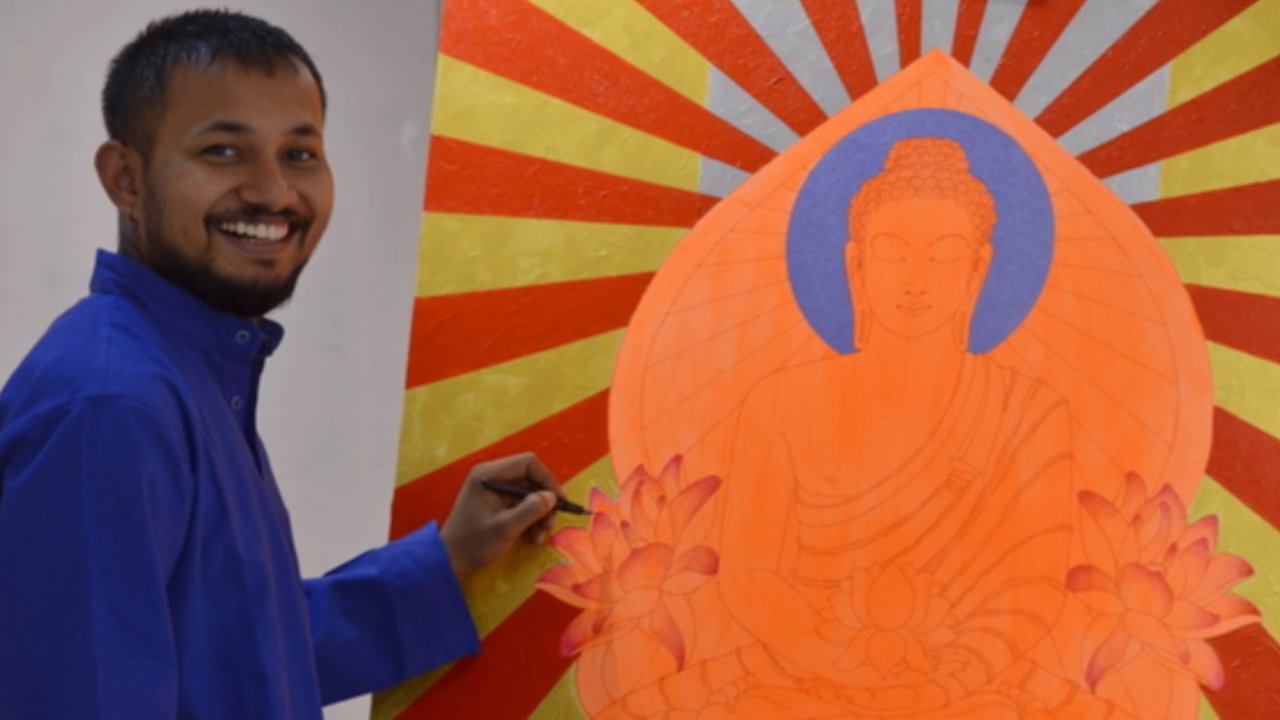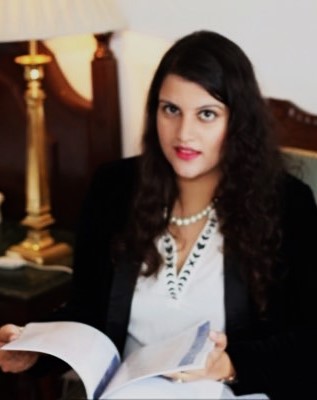Promoting Maithili in the digital age requires a dynamic blend of technology, content creation, and community-driven efforts. Seamless integration into AI tools, voice assistants, and translation platforms will expand accessibility. Social media, podcasts, and YouTube can captivate younger audiences, while digital news portals, e-books, and blogs will amplify Maithili’s literary footprint. Schools must incorporate it into online learning, and startups should develop language-focused apps. Both government and private sector initiatives must fuel content creation. Meanwhile, digital archives and OTT collaborations for Maithili subtitles will preserve its heritage and drive its evolution. A concerted effort will ensure Maithili remains vibrant for future generations.
At the New Delhi World Book Fair 2025, The Interview World engaged with two distinguished scholars—Dr. Savita Jha, Faculty at CVS, University of Delhi, and Founder of Madhubani Literature Festival, Maithili Machaan, and Centre for Studies of Tradition and Systems, New Delhi, along with Prof. Daman Kumar Jha, Professor and Head, University Department of Maithili, Lalit Narayan Mithila University, Darbhanga, Bihar. They shed light on the vision behind Maithili Machaan, explore how Gen Z can cultivate a deeper connection with books in the digital era, and discuss the genre and authors they are showcasing. Here are the key takeaways from this compelling conversation.
Q: What is the vision behind Maithili Machaan, and what impact do you hope this initiative will achieve?
A: Maithili Machaan symbolizes a disappearing cultural space, particularly in villages and cities. Open platforms once encouraged spontaneous gatherings, but modern architecture has replaced them with gated enclosures. Traditionally, the Machaan—a raised platform—was neither a drawing room nor a formal space. Anyone could sit, converse, and engage freely, without the constraints of host-guest dynamics. Conversation here wasn’t mere small talk; it was a process of catharsis. When societies lose such open dialogue, frustrations mount, often manifesting in rising crime.
At Maithili Machaan, we aimed to revive this tradition by creating an inclusive space where writers, publishers, and—most importantly—readers could engage in meaningful discourse. Literature thrives on exchange, yet a gap persists between writers and their audiences. What do readers think of a writer’s work? How do writers respond to their readers’ perspectives? We bridge this divide, facilitating dialogue that ensures authors understand their audience’s expectations and literary needs.
As we enter our eighth year, the feedback has been overwhelming. Readers often approach us with pressing questions. At a recent event, multiple attendees asked about accessing constitutional texts. “Isn’t the Constitution available in PDF?” we asked. Their response was profound: ‘Yes, but we want to hold the book, feel the pages, and read it in its true form.’ Their words reaffirmed the irreplaceable connection between readers and physical books—something no digital platform can fully replicate.
Maithili Machaan is more than a literary gathering; it is a movement to restore the organic exchange of ideas, ensuring that Maithili literature remains relevant, accessible, and deeply connected to its readers.
Q: With the rise of the digital and mobile revolution, Gen Z’s interest in reading books beyond academics has declined. What message would you like to share to inspire them to read more?
A: We respectfully challenge your assessment. Gen Z hasn’t abandoned books—it has simply distanced itself from textbooks. That’s not a cause for alarm. The real issue lies in how we approach digital engagement.
If content isn’t available digitally, how can we expect young, impressionable minds to connect with it? The digital landscape thrives on immediacy, but not everything volatile or flashy leaves a lasting impact. Sensationalism alone doesn’t sustain influence—substance does. Without depth, fleeting trends fade quickly.
First, we must acknowledge this reality. Resistance won’t change it. Instead, we should embrace a pragmatic approach. Our perspective is rooted in realism, shaped by an education system that values critical thinking over nostalgia.
Q: How can we reignite Gen Z’s interest in reading beyond academics in the digital age, and what message would you share to encourage them to explore books?
A: I’m not denying your point—I’m suggesting we reshape our approach. I belong to my generation, just as Gen Z belongs to theirs. We can’t expect them to engage with books the same way we did. Take the works of Vidyapati and other great authors. Their wisdom and values remain timeless, but we must adapt their presentation. Why not distill their essence into reels? That’s how we capture attention.
Think of it like feeding a child. My daughter prefers chicken over vegetables. If I insist on giving her only vegetables, she won’t eat. But if I mix them into her favorite dish, she consumes both. That’s exactly what we need to do with literature. If we can’t win the audience over directly, we must integrate our narratives into their world. Buddhism did this effectively—Brahminism couldn’t fight it, so it assimilated Buddha as the 10th avatar. Indian tradition thrives on adaptation. Instead of resisting reels, we should embrace them. Let’s create the reels we want people to see.
Printed books are transitioning to digital formats. That’s not a threat; it’s an opportunity. Digital platforms offer convenience and accessibility. With a simple search, readers can find any content they desire. But here’s the challenge—how do we condense a 500-page book into five compelling lines? Reels demand brevity, yet they shape perceptions. Just as advertisers craft persuasive messages in a few words, we must distill literature into digestible, engaging snippets.
The goal isn’t to replace books but to spark curiosity. A well-crafted reel can introduce viewers to a book’s essence. If it intrigues them, they’ll seek the full text. The rhythm of language, the flow of reading—these remain irreplaceable. But discovery happens differently now. AI tools like ChatGPT can help. Input a book’s title, and AI extracts its key themes instantly. If a reader finds something compelling, they’ll dive deeper. If not, the book risks fading into obscurity. The choice is ours—resist change and lose relevance or adapt and keep literature alive.
Q: How many books are showcased at this stall, and which domains or genres do they cover?
A: We possess a collection of 14,000 to 15,000 books, spanning a vast range of literature. This includes works by Vidyapati, Jyotirishwar Thakur, Govind Das, and books authored by Professor Daman Kumar Jha, his father, and his uncle. These texts cover diverse subjects and timelines, reflecting a deep tradition of knowledge. Notably, many of these works were penned by women, showcasing their contributions to literature.
Translation is a long-standing tradition here, with some of the best translations available in our collection. We’ve curated a selection in Gyan Changera, offering 63 books, ranging from literature to philosophy, the Gita, and even cooking. Our collection also includes skill-building books in various fields, such as science, physics, biology, and computer science, alongside rich historical works.
Our goal is to transform this knowledge into an engaging format—reels. Visuals have a profound impact on the mind, influencing much faster than text alone. Therefore, we need to reimagine how we present our wealth of knowledge to appeal to the younger generation. These reels should spark curiosity and resonate with Gen Z, capturing their attention and interest in knowledge.
To engage the youth effectively, we must speak their language. We need to connect with them not just through facts, but through impressions, ideas, and creativity. The rule is clear: we must act now, capturing their attention while they are receptive. However, we face a challenge—a generational gap that must be bridged. To ensure a smooth transition of knowledge, we need to streamline the process and make it seamless. Only then can we guide Gen Z in the right direction.








